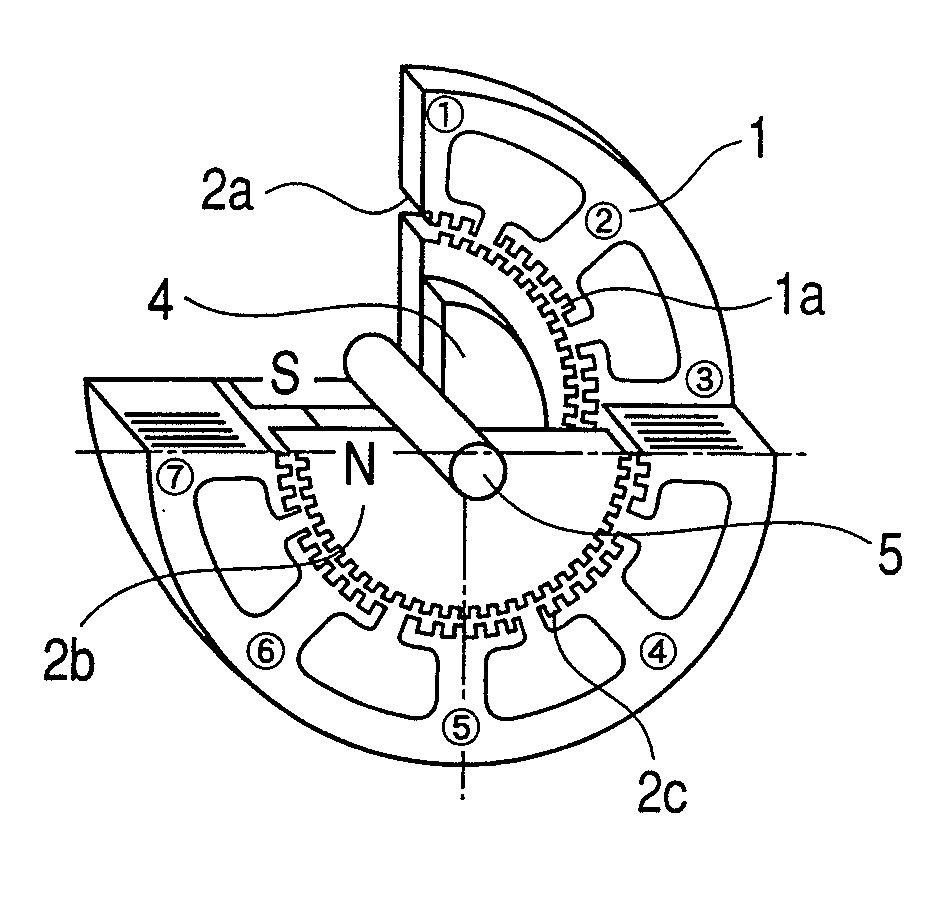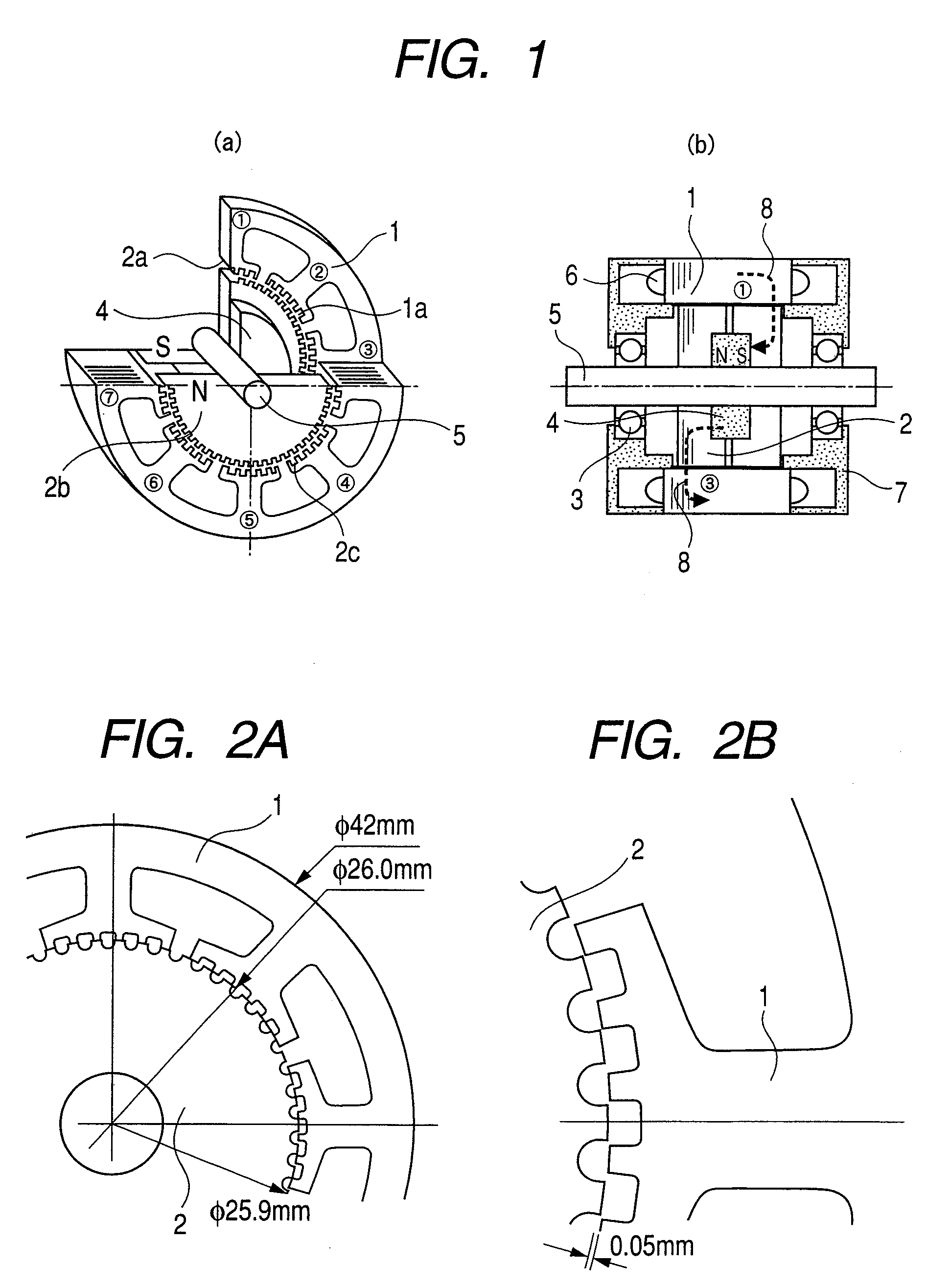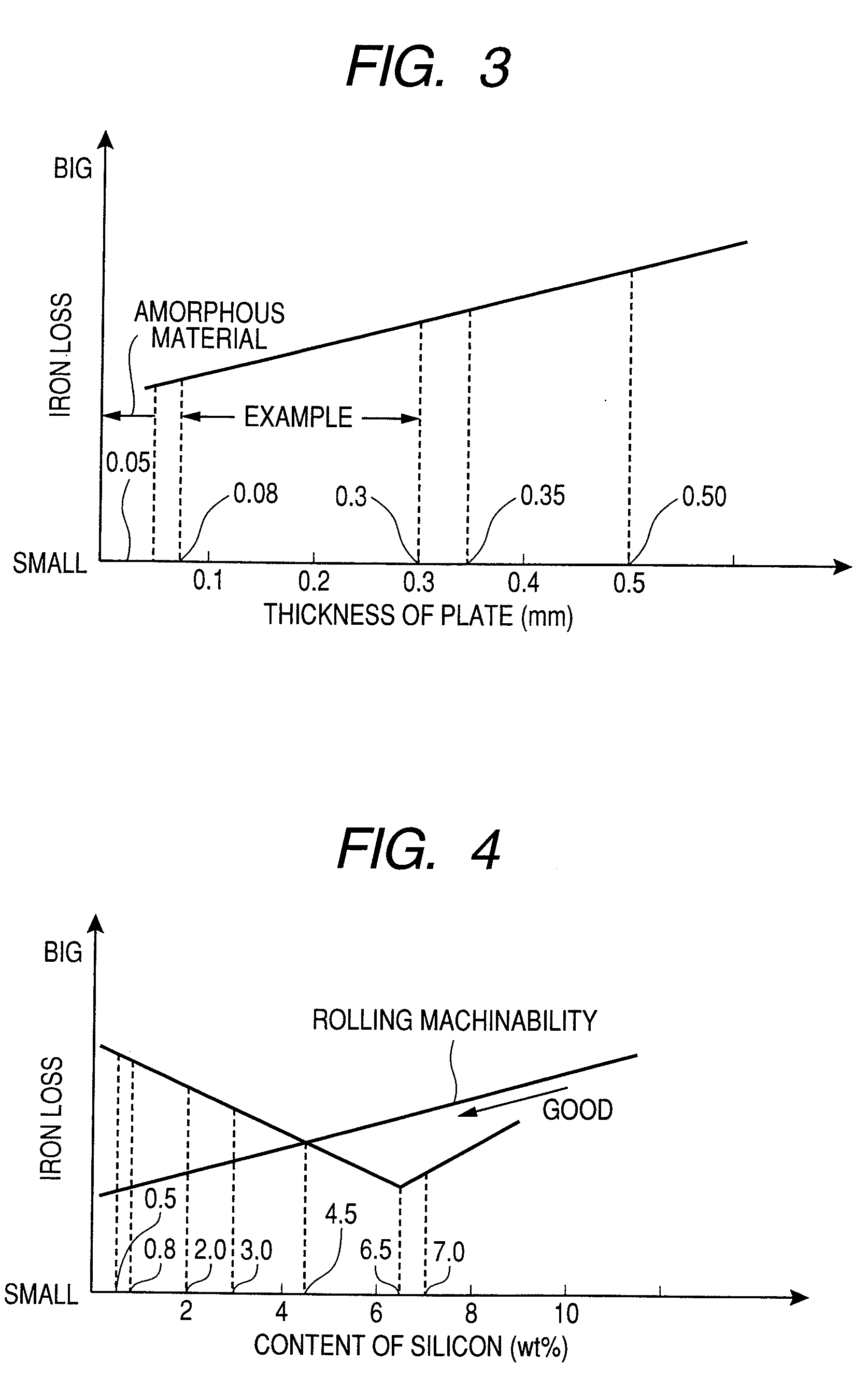Stepping motor and steel plate for manufacturing the stepping motor
a technology of stepping motor and steel plate, which is applied in the direction of magneto-mechanical circuits, instruments, horology, etc., can solve the problems of high precision, complex punching mechanism, and insufficient amount of facilities, so as to reduce iron loss and cogging torque of the stepping motor
- Summary
- Abstract
- Description
- Claims
- Application Information
AI Technical Summary
Benefits of technology
Problems solved by technology
Method used
Image
Examples
Embodiment Construction
[0039]In the following an embodiment of the present invention will be explained.
[0040]FIG. 1 shows structures of the most general, inner rotation type and two-phase hybrid type stepping motor whose basic step angle is 1.8 degrees. FIG. 1(a) shows a partially broken-away, perspective view and FIG. 1(b) shows a cross sectional view along the line A-O-A in FIG. 1(a). In the hybrid type stepping motor the stator and rotor are made of laminated steel plates. A minimum gap between the rotor and stator was as small as 30 to 50 μm, which is a value of the stepping motor capable of being produced. In FIG. 1(a), ①, ②, ③, ④, ⑤, ⑥, ⑦ and ⑧ designate the first pole, second pole, third pole, fourth pole, fifth pole, sixth pole, seventh pole and eighth pole, respectively.
[0041]The stator is provided with eight poles, which are arranged with a pitch of 45 degrees, each stator pole being provided with six small teeth with a pitch of 7.2 degrees, which are distributed to left and right from the cente...
PUM
| Property | Measurement | Unit |
|---|---|---|
| thickness | aaaaa | aaaaa |
| thickness | aaaaa | aaaaa |
| thickness | aaaaa | aaaaa |
Abstract
Description
Claims
Application Information
 Login to View More
Login to View More - R&D
- Intellectual Property
- Life Sciences
- Materials
- Tech Scout
- Unparalleled Data Quality
- Higher Quality Content
- 60% Fewer Hallucinations
Browse by: Latest US Patents, China's latest patents, Technical Efficacy Thesaurus, Application Domain, Technology Topic, Popular Technical Reports.
© 2025 PatSnap. All rights reserved.Legal|Privacy policy|Modern Slavery Act Transparency Statement|Sitemap|About US| Contact US: help@patsnap.com



